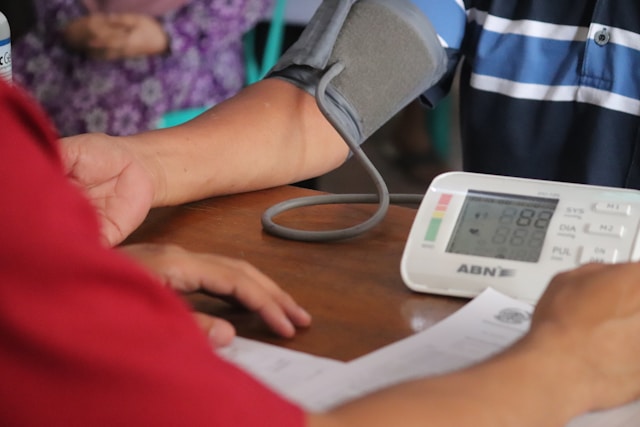Back
15 Oct 2024
Allergies: Not to be sneezed at

Dr Jarrad Van Zuydam | Sports Physician
Allergies are a common part of life for millions of people around the world. Whether it’s a sneeze-filled spring day or a reaction to certain foods, allergies can range from mildly annoying to life-threatening. Understanding what causes allergies, how they affect your body, and how to manage them can help you live more comfortably. In this guide, we’ll break down the basics of allergies, helping you better understand the key information you need to know.
What exactly is an allergy?
An allergy occurs when your immune system reacts to something that it mistakenly sees as harmful, even though it’s usually harmless to most people. These substances, called allergens, include things like pollen, certain foods, or pet dander. When your body encounters an allergen, it releases chemicals like histamine, which cause allergy symptoms such as sneezing, itching, and swelling.
Common types of allergies
There are many types of allergies, and they affect people in different ways. Here are some of the most common ones:
Food allergies: Some people react to foods like peanuts, shellfish, eggs, or milk. Reactions can range from mild symptoms like hives to more severe reactions such as difficulty breathing. Don’t confuse these with food intolerances, which generally trigger digestive discomfort rather than an immune response.
Seasonal allergies (hay fever): Allergens like pollen from trees, grass, or flowers, can trigger sneezing, runny nose, and itchy eyes.
Skin allergies: Contact with substances like latex, certain metals, or plants can cause skin reactions, such as rashes or itching.
Insect sting allergies: Bee stings or insect bites can cause reactions that range from mild swelling to more serious responses.
Drug allergies: Some medications, such as antibiotics, can cause reactions in certain individuals, leading to symptoms like skin rashes or more severe responses.
Indoor allergies: Common allergens like dust mites, mould, and pet dander can trigger allergic reactions, particularly in indoor spaces.
Symptoms of allergies
Allergy symptoms depend on the type of allergen and how your body reacts to it. Here are some of the most common symptoms:
Sneezing and a runny or blocked nose
Itchy or watery eyes
Swelling, especially around the face, lips, or throat
Skin rashes, hives, or itching
Coughing or wheezing
Nausea, vomiting, or diarrhoea (especially with food allergies)
Difficulty breathing in severe cases
Sometimes, people may experience anaphylaxis, which is a serious and potentially life-threatening reaction. Symptoms of anaphylaxis include difficulty breathing, swelling of the throat or tongue, and a sudden drop in blood pressure. If you or someone you know shows signs of anaphylaxis, it’s important to seek immediate medical help and use an epinephrine auto-injector (like an Epipen) if available.
Causes of allergies
The exact reasons people develop allergies aren’t fully understood, but several factors likely play a role. These include genetics, environmental exposures, and how your immune system responds. If you have a family history of allergies, you may be more likely to develop them yourself.
Common allergens include:
Pollen from trees, grass, and flowers
Food allergens like peanuts, shellfish, and dairy
Pet dander from cats and dogs
Insect stings, particularly from bees and wasps
Medications such as penicillin and aspirin
Mould spores, dust mites, and other environmental factors
Air pollution and environmental changes that may increase exposure to allergens

Diagnosing allergies
If you think you have allergies, a healthcare provider can help diagnose the condition through tests and evaluations. Some of the most common tests include:
Skin prick test: Small amounts of potential allergens are placed on your skin to see if any reactions occur.
Blood tests: These measure the levels of antibodies (like IgE) in your blood, which are produced in response to allergens.
Patch tests: These are used for skin allergies by applying allergens to your skin to see if there’s a delayed reaction over a period of time.
Challenge testing: This is typically used for food or drug allergies and involves gradually introducing the allergen under medical supervision to confirm the diagnosis.
These tests help identify your specific allergens, allowing you to manage and avoid them more effectively.
Managing and treating allergies
The most effective way to manage allergies is to avoid the allergens that trigger a reaction. However, this isn’t always possible, especially with things like pollen or dust that are hard to avoid. Fortunately, there are treatments available that can help you reduce symptoms and improve your quality of life.
Here’s a look at some common treatments:
Antihistamines: These help block the effects of histamine, the chemical that your body releases during an allergic reaction. Antihistamines are great for managing symptoms like sneezing, itching, and a runny nose. They’re available over the counter or by prescription.
Decongestants: These help relieve nasal congestion, making it easier to breathe when your allergies are flaring up.
Corticosteroids: Available as nasal sprays, creams, or pills, these reduce inflammation and can help ease allergy symptoms.
Immunotherapy: This longer-term treatment introduces small amounts of an allergen to your body over time, which helps reduce your immune system’s sensitivity to it. This can be done through injections or tablets placed under the tongue.
Biologics: These newer treatments are used for more severe cases, such as asthma or chronic hives. They target specific parts of the immune response to reduce allergy symptoms when other treatments aren’t effective.
If you have severe allergic reactions, particularly anaphylaxis, carrying an epinephrine auto-injector (such as an Epipen) can be life-saving. It’s important to have one with you at all times if you’re at risk of a serious reaction.
Preventing allergic reactions
In the past, it was common to avoid exposing young children to allergens to prevent allergies. However, new research suggests that controlled exposure to allergens during infancy may help reduce the risk of developing allergies later in life. For example, introducing foods like peanuts to infants early on has been shown to lower the likelihood of peanut allergies. This shift in approach has led to new guidelines for parents, particularly for those with children at higher risk of allergies.
If you already have allergies, here are some steps you can take to minimise exposure and prevent reactions:
Use HEPA filters or air purifiers to reduce dust and pollen levels in your home.
Wash bedding regularly to prevent dust mites.
Keep windows closed during high-pollen seasons to limit airborne allergens.
Avoid foods that trigger your allergies and carefully read food labels.
Clean and vacuum regularly to reduce pet dander and dust build-up.
Use protective covers for pillows and mattresses to reduce exposure to dust mites.
By following these strategies and staying aware of your triggers, you can better manage your allergies and reduce the chances of a reaction.
Conclusion
Allergies are common conditions that can cause discomfort but are manageable with the right knowledge and treatments. Whether you experience mild seasonal allergies or more severe food allergies, understanding your triggers and taking steps to avoid or treat them can help you live more comfortably. If you’re unsure about your symptoms or how to manage them, speaking with a healthcare provider is always a good first step.











